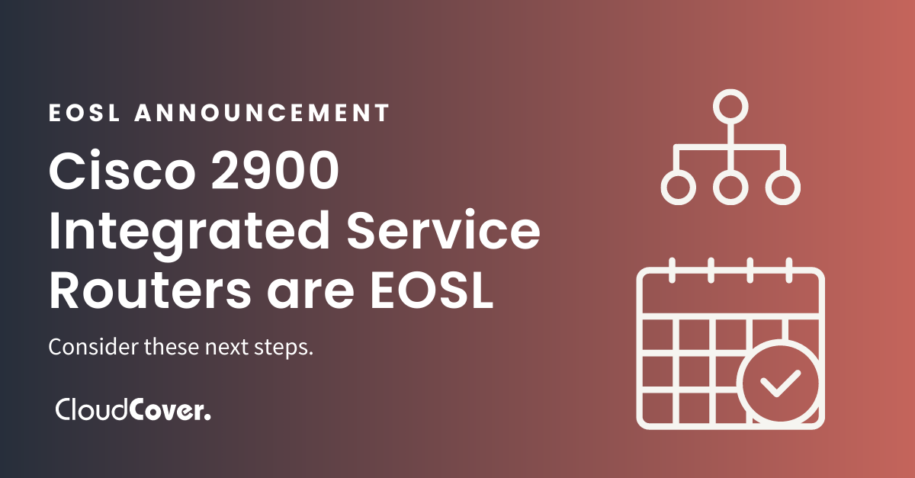
- 5 Minute Read
- EOSL
Cisco’s 2900 Integrated Service Routers Are Currently EOSL
In this post:
What does Cisco EOSL on 2900 integrated routers mean for resellers and their clients? If you’re only utilizing OEM support in your maintenance portfolio it likely means an increase in cost in either CAPEX or OPEX for IT budgets. With OEM supplied maintenance, clients are given two choices: either pay to upgrade your legacy equipment or pay the higher OEM fees to keep it supported. Neither choice is very appealing in a market where budgets are being squeezed and the economic outlook is uncertain.
But EOSL does not need to mean a “rip and replace” when equipment is no longer under warranty. According to analysts:
Vendor EOL announcements trigger a series of events that lead to the end of support for a product. Although the lack of a support contract is an issue for network operations, it does not result in a mandatory requirement to replace the equipment. In some circumstances, it is perfectly fine to get support from a third-party vendor.[1]
Clients Cisco’s 2900 routers have hit their EOSL date, but our data shows us that many clients are still utilizing them in their data centers. This isn’t an outlier. Analysts agree that there are many types of data center equipment that can safely be supported with TPM beyond their EOSL date. Routers and switches are excellent opportunities to consider adding a hybrid maintenance strategy with TPM support. According to analysts:
Historically, data-networking equipment was replaced every three or four years, and it was a fairly common practice to lease equipment for three years and then “rip and replace” the equipment for a new solution…In most cases, we recommend that IT organizations use core switches and routers for five to seven years.[2]
Utilizing extended support options creates key benefits for both customers and resellers.
Customer Benefits
Get Flexible, Extended Support Savings.
- Direct Cost Savings: Using TPM to support aging equipment reduces hardware support costs by an average of 40% or more and delays costly upgrades.
- Flexibility: TPM offers more customizable contracts. Customers can choose from a variety of contract terms and timing.
- Multivendor Support: Most OEMs can only offer support for their own company’s equipment. When a customer utilizes a TPM partner they get extended support for multiple vendors’ equipment on a single contract, simplifying and streamlining their maintenance.
- Escape Post-Warranty Maintenance Increases: Customers adding TPM to their overall maintenance protect equipment and avoid significantly higher OEM, post-warranty pricing.
Reseller Benefits
Increase Your Services and Selling Capabilities.
- Add Extension of Life on Your Customers’ Existing Hardware: If you’re a reseller utilizing TPM support you can extend the life of the equipment you’ve already sold your customers 2+ years ago with TPM at significantly less than OEM prices.
- Add New Services: Gain the ability to offer your customers maintenance on network, server, and storage equipment for a variety of OEM brands.
- Increase Your Value: Increase your value with your customers by offering services that flex with their changing needs.
The reality is that due to supply chain shortages, delays for new equipment are still averaging 18-24 months. Most customers are worried about spending in this market but also can’t afford to leave their equipment at risk.
For both resellers and their maintenance customers, now is the time to consider extending support with a TPM provider. Reach out to get a quote and learn how CloudCover is using artificial intelligence (AI) to stock smart inventories and better


